Device Manager is a utility in Windows that lists all connected devices. Additionally, you can identify and troubleshoot problematic hardware here, and even change power settings. However, for some users, the Power Management tab is missing from Device Manager.
This can happen for a number of reasons and may impact your experience as changes cannot be made. In this case, you will not be able to configure how the system controls power to the device and whether the device can wake the PC.
So, read the following section to know what to do if the Power Management tab is missing from Device Manager in Windows 11.
What should I do if the Power Management tab is missing from Device Manager?
1. Update Windows
- Press Windows I to launch the Settings app and then click on the tab in the left navigation pane Select Windows Update.

- Next, click the Check for Updates button on the right to scan for any new available versions of your operating system.

- If the update is listed, click Download and Install.

The first thing you should do when the Power Management tab is missing from Device Manager is update your operating system. Often, bugs in the current version of Windows can be the source of the problem.
If the problem persists after making changes, move on to the next method.
2. Change BIOS settings
- Press the Windows key to start the Start menu, click the power button, and hold Shift and click Restart.

- Wait for your PC to enter the recovery environment (RE), then select Troubleshoot.

- Next, click Advanced Options.

- Click UEFI Firmware Settings from the six options shown here.

- Now, click Restart to enter the system BIOS.

- Click on the Power Management tab.
- Now, enable the USB wake support feature, save the changes, and exit the BIOS.
The USB Wake Fit feature in Windows helps to wake the computer from sleep using USB devices such as mouse and keyboard. If the feature is disabled, the Power Management tab may be missing from Windows 11's Device Manager, so try enabling it.
3. Reinstall the driver
- Press Windows R to start the run command and enter devmgmt.msc in the text field , then click OK or hit Enter to launch Device Manager.

- Find the device in question here, right-click on it and select Uninstall device from the context menu.

- Click Uninstall in the confirmation prompt that appears.

#If the currently installed driver is corrupted, reinstalling it should resolve the issue. Corrupted drivers can be easily identified by a warning sign in the corner of the device icon.
Once completed, check to see if the Power Management tab reappears in Device Manager.
4. Update the device driver
- Press Windows S to launch the search menu and enter Device Manager# in the text field at the top ## and click on the relevant search results.
 Next, double-click the entry containing the device in question.
Next, double-click the entry containing the device in question.  Right-click on the device in question and select
Right-click on the device in question and select - Update Driver from the context menu.
 Now, select
Now, select - Automatically search for drivers from the two options shown in the Update Driver window.
 Wait for Windows to find the best driver available on your system.
Wait for Windows to find the best driver available on your system.
⇒Get DriverFix
5. Access the Power Management tab via Control Panel
- Press Windows S to launch the Search menu and enter in the text field at the top "Control Panel" and click on the relevant search results that appear.

- Click Hardware and Sound from the various options listed here.

- Next, click Devices and Printers.

- Right-click the device whose power settings you want to change and select Properties from the context menu.

- Go to the Hardware tab.

- Now, double-click each entry here one at a time to launch Properties.

- Click the "Change Settings" button in the "Properties" window.

- In one of the entries you should find the "Power Management" tab and be able to make the changes you want.

6. Modify the registry
- Press Windows R to start the Run Command dialog box, in the text field Enter regedit in and click OK or click Enter to start Registry Editor.

- Click Yes on the pop-up UAC (User Account Control) prompt.

- Now, paste the following path into the address bar at the top and hit Enter:
<strong>Computer\HKEY_LOCAL_MACHINE\SYSTEM\CurrentControlSet\Control \Power</strong>
- If there is no CsEnabled key here, right-click the empty space on the right, hover the cursor over New, and then select Select DWORD (32-bit) Value from the context menu to create one.

- Double-click the key to modify.

- Enter 0 under Value Data if it is not already the value, then click OK to save the changes.

- Now, restart your computer for the changes to take full effect.
Since this method involves making changes to the registry, we recommend that you stick to the steps listed here and be careful while performing them, as small mistakes on your part could seriously damage your PC.
Also, start using an effective registry cleaning tool to improve system performance.
7. Perform a System Restore
If none of the methods listed here work, you have no choice but to perform a System Restore.

When you perform a restore, the system is essentially restored in time to a state where no errors existed. This is accomplished by reconfiguring settings and deleting apps, among other changes, but the process does not affect stored files.
Additionally, you can undo System Restore if the process does not produce the desired results.
These are all the ways you can fix the issue causing the Power Management tab missing in Windows Device Manager issue.
The above is the detailed content of 7 Fixes If Power Management Tab Is Missing in Device Manager. For more information, please follow other related articles on the PHP Chinese website!
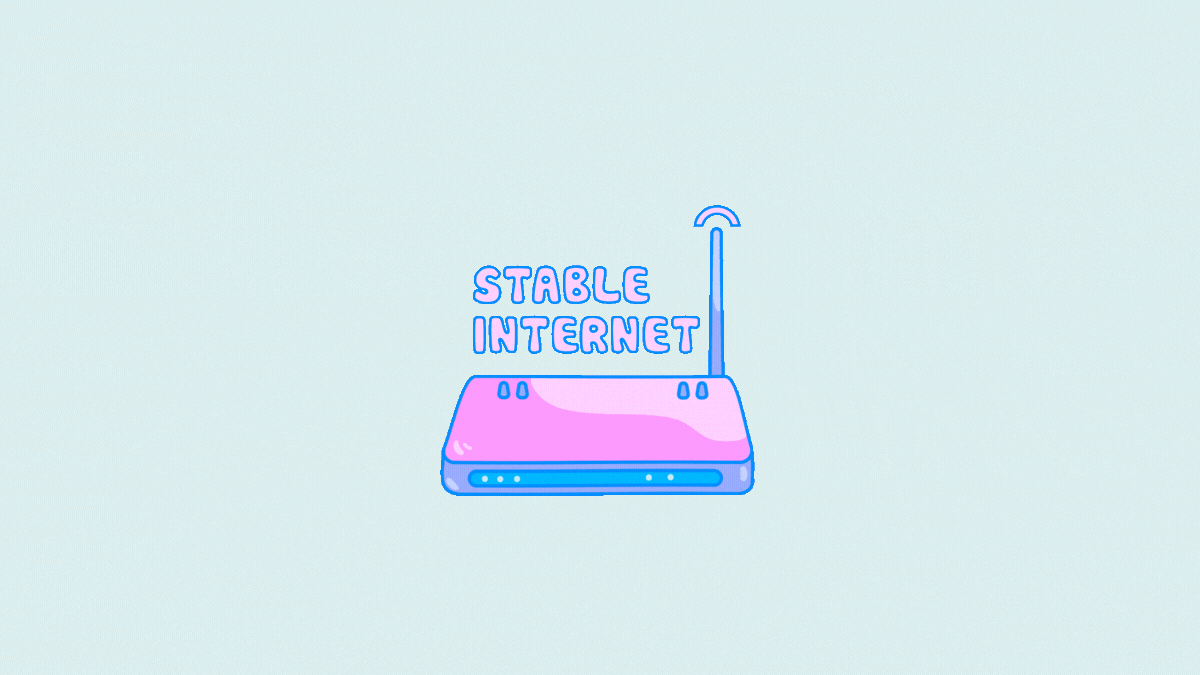 Microsoft Teams 不显示图像?怎么修Apr 16, 2023 am 10:28 AM
Microsoft Teams 不显示图像?怎么修Apr 16, 2023 am 10:28 AM解决 Microsoft Teams 无法加载或显示图像的问题的 10 种方法如果您收到的图像无法在 Microsoft Teams 中加载,并且您看到的只是一个图像图标,而不是实际图像应加载到的位置,那么以下修复程序应该可以帮助您解决此问题。修复 #1:检查您的互联网连接当您遇到无法在 Microsoft Teams 上加载图像时要检查的第一件事是查看您的计算机是否已连接到有
 属性中没有位置选项卡:如何启用它Apr 13, 2023 pm 11:16 PM
属性中没有位置选项卡:如何启用它Apr 13, 2023 pm 11:16 PM文件夹属性为用户提供详细信息,例如创建日期、文件夹名称、大小等。但是,有时您可能会在Windows文件夹的属性中遇到“位置”选项卡。因此,我们将引导您完成故障排除和重新启用它的步骤。或者,您可以查看我们关于修复 Windows 11 上的文件夹访问被拒绝问题的详细指南。为什么在文件夹属性中找不到位置选项卡?有几个因素可能导致 Windows 11 上文件夹属性中缺少位置选项卡。最值得注意的是:文件夹不支持移动 – 有些文件夹支持移动到另一个位置,而有些则不支持。默认情况下,支持从一个位置移动到另
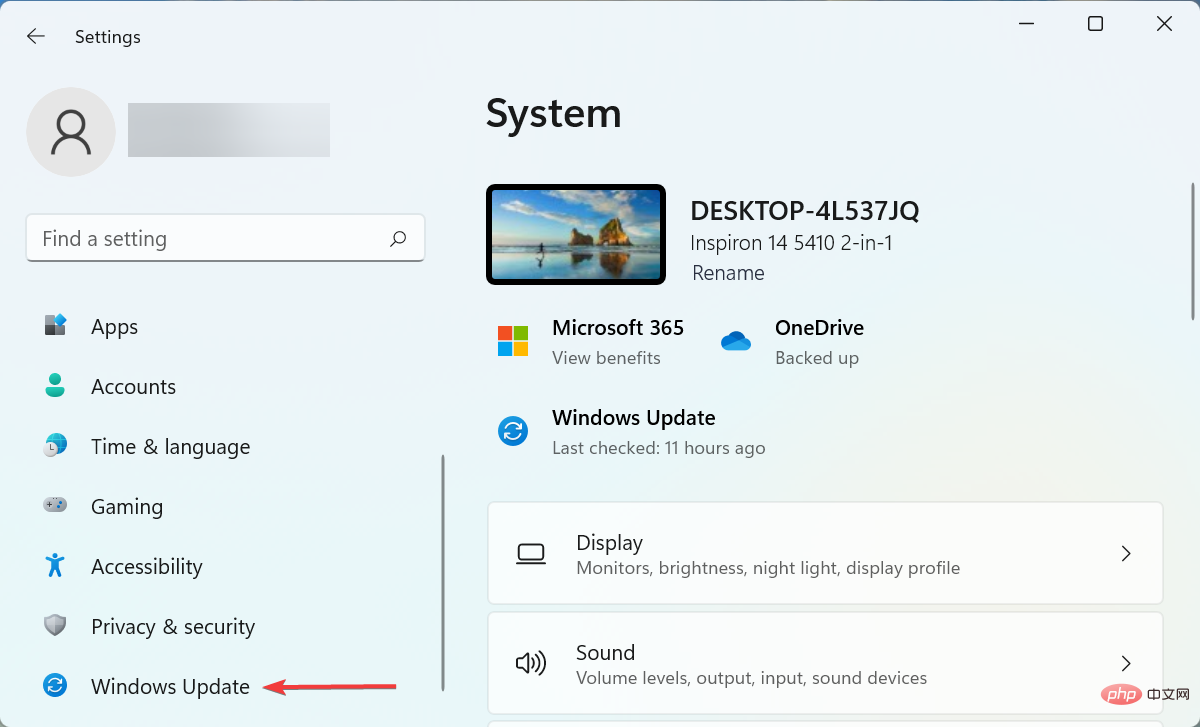 如果设备管理器中缺少电源管理选项卡,则进行 7 个修复Apr 14, 2023 pm 07:04 PM
如果设备管理器中缺少电源管理选项卡,则进行 7 个修复Apr 14, 2023 pm 07:04 PM设备管理器是Windows中列出所有连接设备的实用程序。此外,您可以在此处识别有问题的硬件并对其进行故障排除,甚至可以更改电源设置。但是,对于某些用户,设备管理器中缺少电源管理选项卡。这可能由于多种原因而发生,并且由于无法进行更改而可能会影响您的体验。在这种情况下,您将无法配置系统如何控制设备的电源以及设备是否可以唤醒PC。因此,请阅读以下部分以了解如果Windows11的设备管理器中缺少电源管理选项卡该怎么办。如果设备管理器中缺少电源管理选项卡,我该怎么办?1.更新Windows按Wind
 如何解决 Windows 10 中的 Rundll32.exe 错误Apr 14, 2023 pm 04:25 PM
如何解决 Windows 10 中的 Rundll32.exe 错误Apr 14, 2023 pm 04:25 PMRundll32.exe文件是一个系统进程文件,与Windows10的功能相关。它使用DLL(动态链接库)库,该库包含在Windows系统上一次运行的多个程序重复使用的代码。代码的重复使用有时可能会导致错误。此问题的主要原因是删除了rundll32.exe文件、损坏的DLL文件、Windows注册表中不正确的DLL条目等。在本文中,我们将了解发生了哪些不同类型的rundll32.exe错误以及如何处理解决这些问题。用户面临的不同Rundll32.exe错误发生run
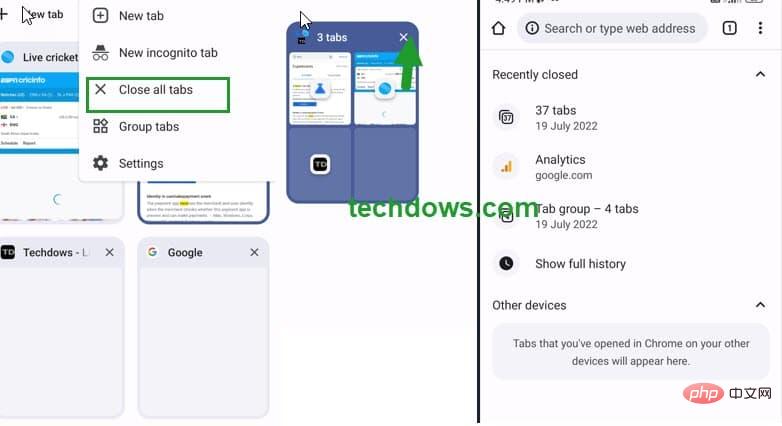 Android 上的 Chrome 现在可让您一次恢复所有关闭的标签页Apr 15, 2023 pm 03:25 PM
Android 上的 Chrome 现在可让您一次恢复所有关闭的标签页Apr 15, 2023 pm 03:25 PMAndroid上的Chrome用户现在可以通过转到“最近的标签和最近关闭的”部分轻松地批量恢复最近关闭的 标签和标签 组。该功能现在可用。以下是如何轻松启用和恢复所有关闭的选项卡的方法。桌面上的 Chrome 可以更轻松地恢复旧选项卡,因为它会在主菜单的历史记录子菜单中的最近关闭下显示它们。您不仅可以检索包含选项卡的窗口,还可以检索选项卡组。这是从以前的 session 中调用
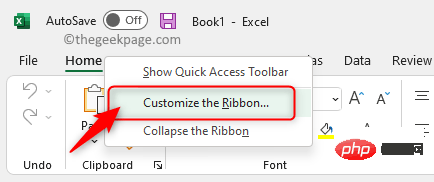 如何在 Microsoft Excel 中显示开发人员选项卡Apr 14, 2023 pm 02:10 PM
如何在 Microsoft Excel 中显示开发人员选项卡Apr 14, 2023 pm 02:10 PM如果您需要录制或运行宏、插入 Visual Basic 表单或 ActiveX 控件或在 MS Excel 中导入/导出 XML 文件,则需要 Excel 中的“开发人员”选项卡以便轻松访问。但是,默认情况下,此开发人员选项卡不会显示,但您可以通过在 Excel 选项中启用它来将其添加到功能区。如果您正在使用宏和 VBA 并希望从功能区轻松访问它们,请继续阅读这篇文章。在 Excel 中启用开发人员选项卡的步骤1. 启动MS Excel应用程序。右键单击顶部功能区选项卡之一的任意位置,然后在出现
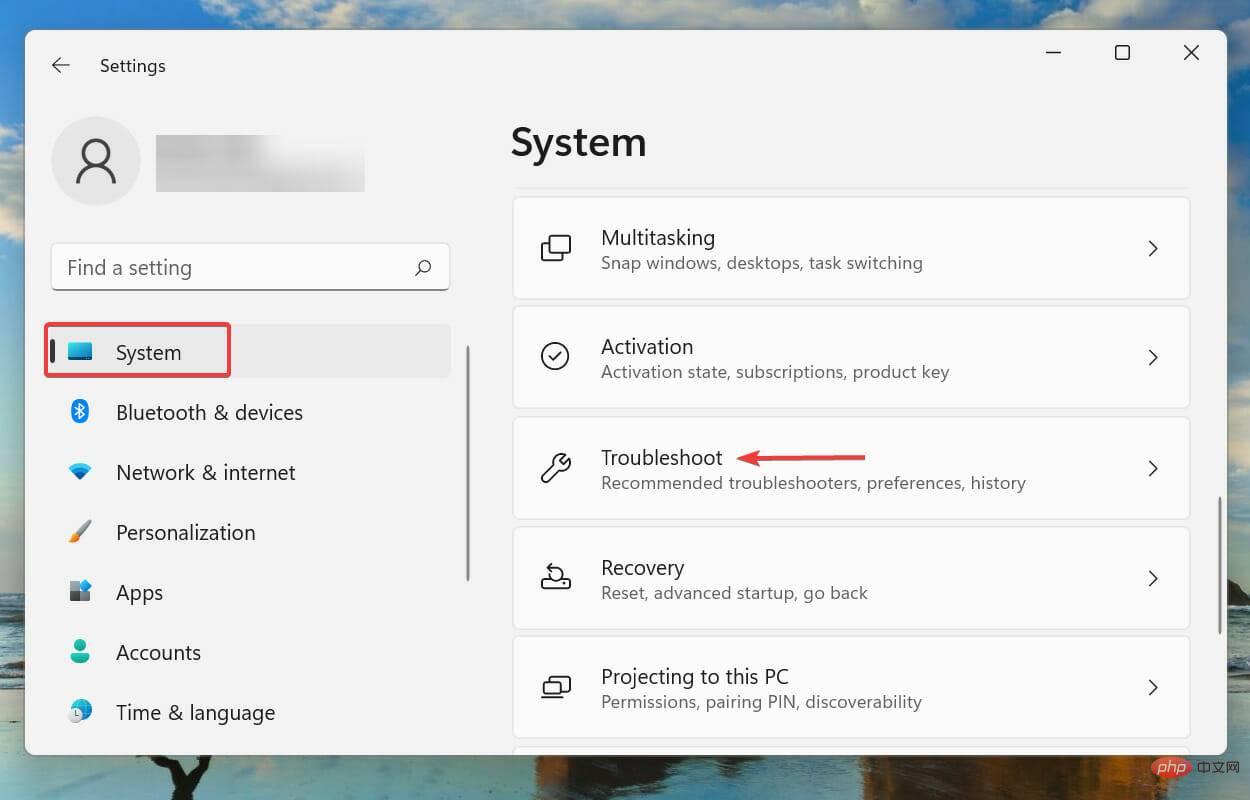 杜比全景声在 Windows 11 中不起作用?立即修复Apr 16, 2023 pm 09:31 PM
杜比全景声在 Windows 11 中不起作用?立即修复Apr 16, 2023 pm 09:31 PM如果杜比全景声在Windows11中无法运行,我该怎么办?1.运行内置音频疑难解答按Windows+I启动“设置”应用程序,然后单击“系统”选项卡右侧的“疑难解答”。接下来,单击“其他疑难解答”。找到并单击播放音频疑难解答旁边的运行按钮。等待疑难解答程序检测到问题,然后按照屏幕上的说明修复错误。每当处理Windows中的错误时,建议您首先为其运行相关的内置疑难解答程序(如果存在)。众所周知,这些可以以最少的努力解决大量问题。2.更新Windows11按Windows+I启动“设置”应用,然后
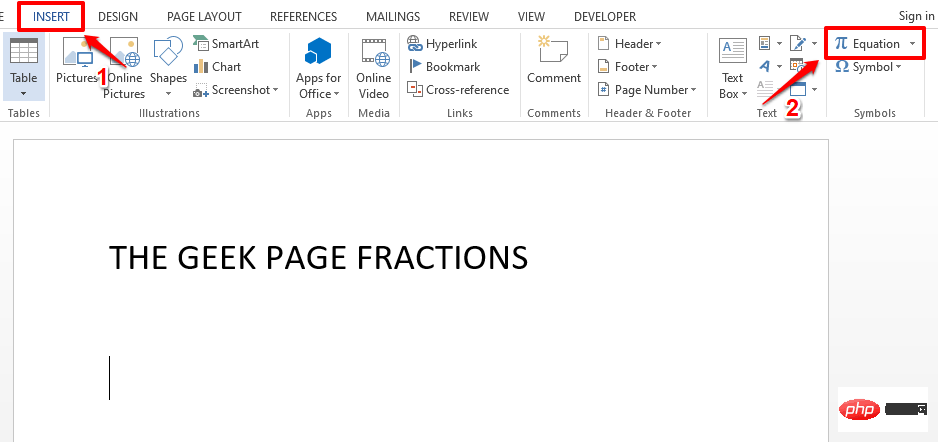 如何在 Microsoft Word 中写分数Apr 13, 2023 pm 02:04 PM
如何在 Microsoft Word 中写分数Apr 13, 2023 pm 02:04 PM我们都知道 Microsoft Word 非常灵活,并且具有许多功能。最重要的是我们知道如何充分利用 Microsoft Word 提供的功能。其中一个令人惊奇的功能是在您的 Word 文档中插入一个分数值。许多地方都使用分数。但是当我们在 Word 文档中插入分数时,它的格式并不总是像分数一样。在本文中,我们通过一些非常简单的步骤解释了如何轻松地将格式良好的分数数字插入到 Microsoft Word 文档中。继续阅读,了解如何轻松掌握这个超级方便的 Word 技巧。在 Microsoft W

Hot AI Tools

Undresser.AI Undress
AI-powered app for creating realistic nude photos

AI Clothes Remover
Online AI tool for removing clothes from photos.

Undress AI Tool
Undress images for free

Clothoff.io
AI clothes remover

AI Hentai Generator
Generate AI Hentai for free.

Hot Article

Hot Tools

SublimeText3 Mac version
God-level code editing software (SublimeText3)

Dreamweaver Mac version
Visual web development tools

SublimeText3 Chinese version
Chinese version, very easy to use

VSCode Windows 64-bit Download
A free and powerful IDE editor launched by Microsoft

SublimeText3 Linux new version
SublimeText3 Linux latest version




































